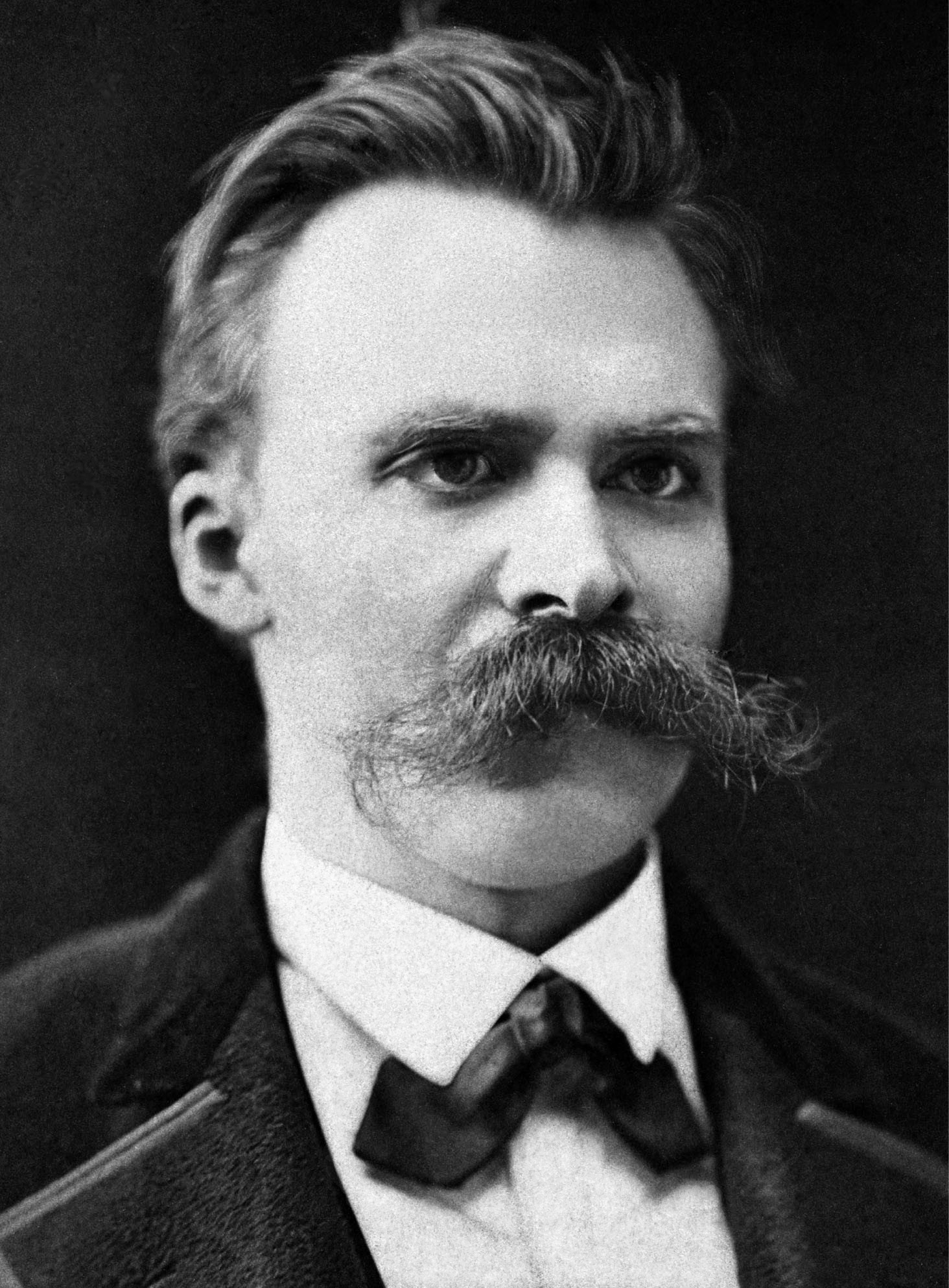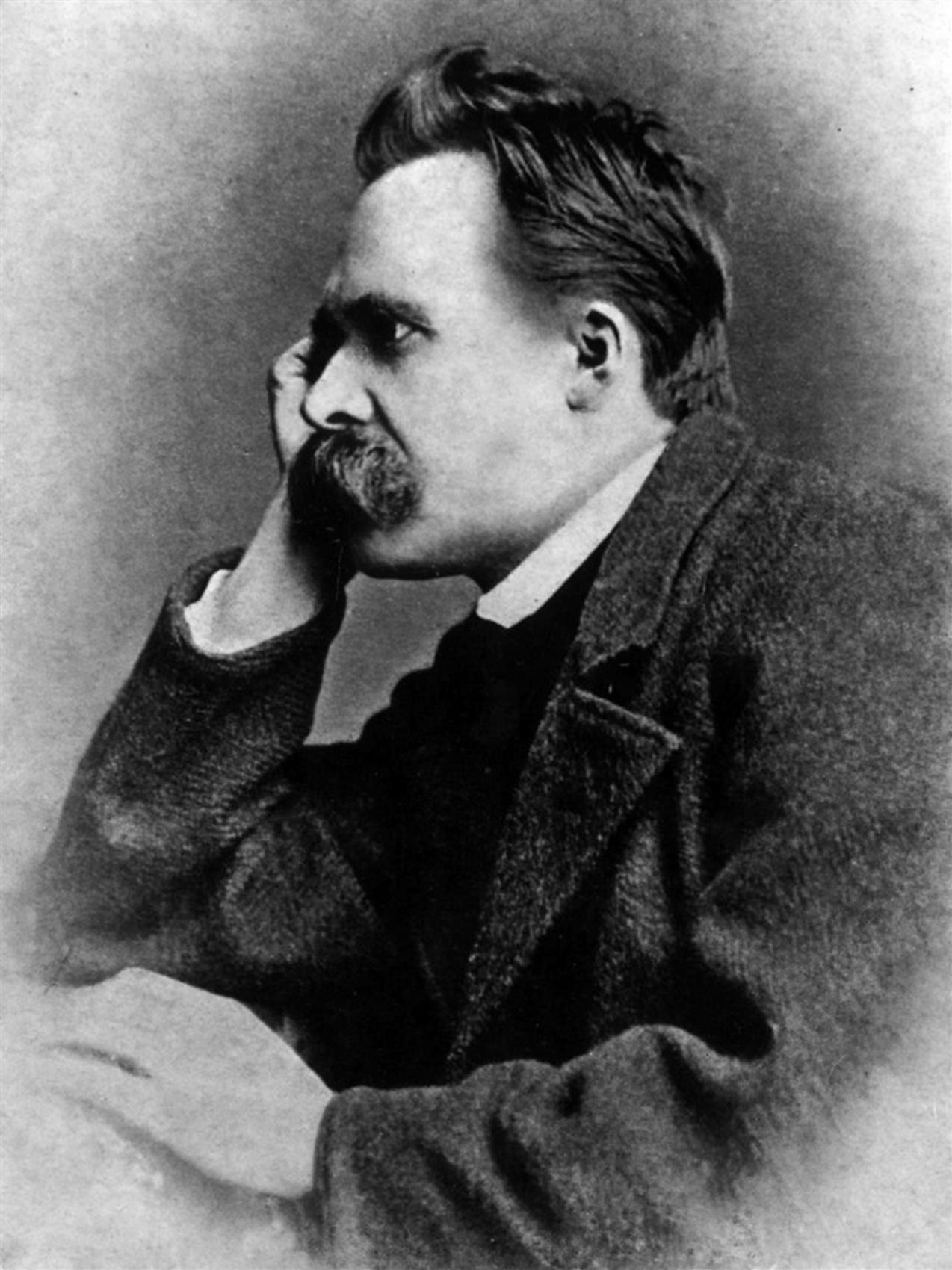Reichskommissariat UkraineThe Reichskommissariat Ukraine (
Reich Commissariat of Ukraine) was the civil administration of much of
German-occupied Ukraine (which included adjacent areas of modern
Belarus and
pre-war Poland) during
World War II. Between September 1941 and March 1944, the Reichskommissariat was administered by Reichskommissar
Erich Koch as a
colony. The administration's tasks included the pacification of the region and the exploitation, for
German benefit, of its resources and people.
Adolf Hitler issued a
Fuehrer Decree defining the administration of the newly-occupied Eastern territories on 17 July 1941.
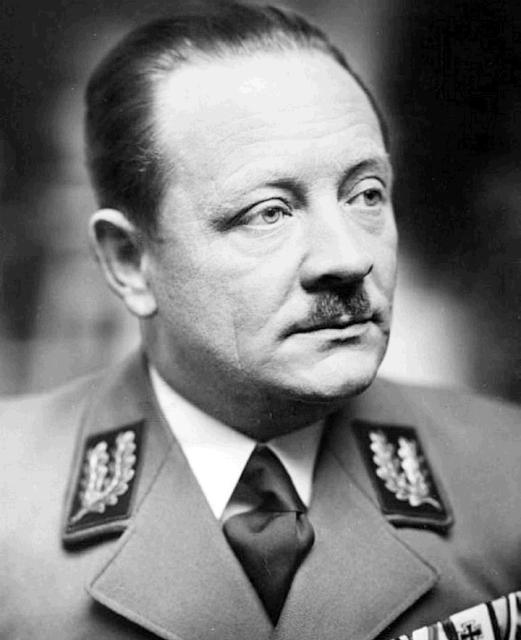 Reichskommissar Erich Koch of the Reichskommissariat Ukraine
Reichskommissar Erich Koch of the Reichskommissariat UkraineBefore the German invasion,
Ukraine was a constituent
republic of the USSR, inhabited by
ethnic Ukrainians and
Russians, with
German,
Jewish,
Roma,
Polish and
Crimean Tatar minorities. It was a key subject of Nazi planning for the post-war expansion of the German state and civilization.
HistoryNazi Germany launched its invasion of the
Soviet Union on June 22, 1941, seeking to destroy its recent, de jure ally and ideological opponent. In the mind of
Adolf Hitler and other
German expansionists, the destruction of the "
Bolshevik" state would remove a threat from Germany's eastern borders and allow Germany to use the vast spaces of the western Soviet Union, which included the fertile Ukraine, as a source for the fulfillment of the material needs of the German people. The region would also provide space (
Lebensraum) for future German colonists.
The German invasion resulted in the collapse of the western elements of the
Soviet Red Army, and Nazi plans for
Ukraine became reality. On July 16, 1941, Hitler appointed the fervent Nazi
Erich Koch as
Reichskommissar for the planned Reichskommissariat Ukraine, created by
a Führer decree on August 20, 1941. Originally subject to
Alfred Rosenberg's Reich Ministry for the Occupied Eastern Territories, it became a separate German civil entity. First transfer of Ukrainian territory from military to civil administration took place on September 1, 1941. There were further transfers on October 20 and November 1, 1941, and a final transfer on September 1, 1942, which brought the boundaries of the province to beyond the
Dnieper river.
 Alfred Rosenberg, Reich Minister for the Occupied Eastern Territories
Alfred Rosenberg, Reich Minister for the Occupied Eastern TerritoriesOn 14 December 1941,
Rosenberg discussed with
Hitler various issues regarding
the Reichskommissariat Ukraine. These included a dispute over
Koch's status and access to the
Fuehrer, manpower shortages over gathering the harvest,
Hitler's insistence that the
Crimea should be "
cleaned out" (i.e., unwanted nationalities to be removed), renaming of towns (Simferopol to "
Gotenburg" and Sevastopol to "
Theodorichhafen") and an adjustment to the border with Romanian-controlled
Transnistria to remove overlooking of the shipyards at
Mykolaiv.
The Führer decreed the creation of the Nazi Organization "
Arbeitsbereich Osten der NSDAP", for the new eastern occupied territories, on April 1, 1942. This move had been bitterly resisted by
Rosenberg who rightly feared that the transformation of the administration of the eastern territories from a state to a party bureaucracy would spell the effective end of his ministry (a state organ)'s authority and
Himmler, who rightly feared that an arbeitsbereich's establishment would be accompanied by the commissars becoming RVKs (Kommissars for war) and thus enormously empowered at the expense of the
SS, that has already been steadily losing ground since late September, when the commissariat government began establishing itself, with local commissars asserting control over the police in their territories, hitherto controlled by the
SS.
Himmler and
Rosenberg's rearguard resistance soon collapsed in the face of pressure from both
Martin Bormann in
Berlin and
Koch and
Lohse in the field.
Rosenberg at least managed to be appointed the
Reichsleiter ("
Reich leader") of the new arbeitsberiech.
Rosenberg later attempted to take such political power into the political section of the ministry to keep all party issues in his control, and prohibited the creation of organizations and any political activity in the East without his express authorisation. Needless to say he was entirely disobeyed. Hoping that by joining forces they might regain some influence,
Himmler and
Rosenberg decided upon the appointment of
Gottlieb Berger, Himmler power-political hatchet man and
the SS' head of personnel as
Rosenberg's deputy. A move which in theory would give
Rosenberg control over
SS forces in the occupied Soviet territories under civil administration in return for
Rosenberg's support for the
SS in its power struggles. The new twosome achieved nothing other than to exasperate each other beyond endurance.
Berger soon withdrew all cooperation.
Koch and
Lohse thereafter gradually reduced communication with
Rosenberg, liaising with
Hitler through
Bormann and the party chancellery. Both also made a point of establishing strong
SA organisations in their jurisdiction as a
counterbalance to the SS. Given that many of the commissariat official were
active or
reserve SA officers whose
pre-existing grudge against the
SS was reactivated by these measures. A poisoning of relations was guaranteed. As a last resort the
HSSPF in
Ukraine Hans-Adolf Prutzmann attempted to approach
Koch directly only to be contemptuously abused and dismissed.
Geography and administrative divisionsThe Reichskommissariat Ukraine excluded parts of present-day
Ukraine. It extended, in the west, from the Volhynian region around Lutsk, to a line from Vinnytsia to Mykolaiv along the Southern Bug River in the south, to the areas surrounding Kiev, Poltava and Zaporizhia in the east, but excluded the Crimea, Chernihiv, Kharkiv, and the Donbas/Donets Basin, which remained under German military jurisdiction. At its greatest extent, it included just under 340,000 square kilometers.
The Reichskommissariat's administrative capital was at Rowno and it was divided into six general districts (Generalbezirke), each headed by a general commissar. These districts were (administrative centres in parentheses):
* Wolhynien und Podolien (Luzk) - headed by SA Obergruppenführer Heinrich Schöne
* Shitomir (Shitomir) - headed by Regierungpräsident Kurt Klemm, then by Gauamtsleiter Waldemar Magunia (from 1942)
* Kiew (Kiew) - SA-Brigadeführer I. Quitzrau (till February 14, 1942), then SA-Oberführer Waldemar Magunia (since February 14, 1942)
* Nikolajew (Nikolajew) - headed by NSFK-Obergruppenführer Ewald Oppermann
* Dnjepropetrowsk (Dnjepropetrowsk) - headed by Oberbefehlshaber der NSDAP ('party commander in chief') Claus Selzner
* Krim (Melitopol) - headed by Gauleiter Alfred Frauenfeld (note that this district's title was a misnomer, it initially included only the "Taurida" area north of the Crimean peninsula).
Planned Future expansion of the Reichskommissariat UkraineScheduled for incorporation into the Reichskommissariat Ukraine but never transferred to civil administration were the Generalkommissariats Charkow, Stalino (Donetsk), Rostow and Saratow, which would have brought the boundary of the province to the Volga. Conquered territories further to the east, including the rest of Ukraine, were under military governance for the entirety of the war, until 1943–44.
The administrative position of the Krim Generalbezirke remained ambiguous. The Crimean peninsular was added to the general commissariat in the summer of 1942, but remained part of the military rear area. Its administrator, Frauenfeld, played off the military and civil authorities against each other and gained the freedom to run the commissariat as he saw fit. He thereby enjoyed complete autonomy, verging on independence, from Koch's authority. Frauenfeld's administration was much more moderate than Koch's and consequentially more economically successful. Koch was greatly angered by Fraunfeld's insubordination (a similar situation existed in the administrative relationship between the Estonian general commissariat and Reichskommissariat Ostland).
Former Soviet territory between the Southern Bug and Dniester rivers was also excluded from the Reichskommissariat Ukraine; this was given to Romania and named "
Transnistria" or "
Transniestra", governed from
Odessa by
Dr. Alexeanu, the Romanian Governor.
Rosenberg's idea of extending the eastern frontier of Ukraine up to the Volga was based on strategic motives, not ethnic and to change to Ukrainians the loss of Galicia annexed to the Polish General Government, at Kremenchuk and Poltava, their territories annexed to the Generalbezirk in Kiev and Zaporizhia at the Generalbezirk of Dnipropetrovsk. The Crimean Peninsula was maintained under Wehrmacht control, but the rest of the territory, with previous military authorisation, was under the civil administration of Generalbezirk in Crimea, which also included the Tauria administration land, Nogai Steppe and parts of Mykolaiv and Zaporizhia provinces.
Another idea proposed by
Rosenberg was the "
Ukraines debt to convert into an allied state of Germany and Caucasus, with nearby territories in the north, in way to transformed in Federal State, lead by a German Plenipotentiary."
GovernmentThe Staatssekretär '
Secretary of State'
Herbert Backe was personally nominated by Reich Minister for the Occupied Eastern Territories
Alfred Rosenberg. His ministry produced the "
Instruktion fur einen Reichskommissar in der Ukraine" for the direction of future administrators of the Reichskommissariat Ukraine.
"
Die Reichskommissare unterstehen dem Reichsminister fur die besetzen Ostgebiete und erhalten ausschliesslich von ihm Weisungen..." ( translat.:
The Reich's Commissioners are subordinated under the Reich's minister for the occupied eastern territories and receive only orders from him) was the "
Führer" decree for the administration of the new eastern territories, the Reichskommissars reported to the Eastern Affairs Ministry.
This administrative structure was subdivided into 114 Kreisgebiete, and further into 443 Parteien. The capital of this German administration remained in Rivne, in Western Ukraine. Each "
Generalbezirke" was administered by a "
Generalkomissar"; each Kreisgebiete "
circular [i.e. district] area" was led by a "
Gebietskomissar" and each Partei "
party" was governed by a Ukrainian or German "
Parteien Chef" (Party Chief). At the level below were German or Ukrainian "
Akademiker" ('Academics', i.e. District Chiefs) (similar to Polish "
Wojts" in the General Government).
At same time at a smaller scale, the local Municipalities was administered by native "
Bailiffs" and "
Mayors", accompanied by respective German political advisers if needed. In the most important areas, or where a German Army detachment remained, the local administration was always led by a German; in less significant areas local personnel was in charge.
The German Administration gave the role of "
Chief of Ukrainian Principal Commission" to Professor
Wolodomyr Kubijowytsch, an early local supporter.
The civil and criminal justice local administration, apart from
the local SS and
Wehrmacht military justice branches, was staffed by "
Parteien Chef", "
Bailiffs", "
Mayors", with supervision of German "
Schoffen" (Advisers) and "
Schlichten" (Arbiters) with ample legal powers. The most important cases or situations which affected "
natural rights" of any "
Aryan" subject, were managed in
Rivne or
Berlin.
The
Wehrmacht introduced reforms in
Ukraine allowing limited religious liberty. In January 1942, Bishop
Polikarp Sikorsky of the Ukrainian Autocephalous Orthodox Church became the temporary administrator of church lands in the German-occupied Ukraine and he was granted the title of Archbishop of
Lutsk and
Kovel. He also had authority over Bishoprics at
Kiev,
Zhytomyr (Bishop Hryhorij Ohijchuk),
Poltava,
Kirovohrad,
Lubny (Bishop Sylvester Hayevsky),
Dnipropetrovsk and
Bila Tserkva (Bishop Manuyil Tarnavsky) by decree of the Civil German Administration of limited religious liberty in
Ukraine. The German Administration also allowed Archbishop Alexander of
Pinsk and
Polesia to maintain the religious authority he wielded before the war and the same permission was granted to Archbishop
Alexander of Volhynia.
German political figures related with Ukraine administration * Reich Ministry
Alfred Rosenberg * Reichscommissar
Erich Koch * Generalcommissar
Ernst Leyser * Gebietcommissar
Steudel * SS-Obergruppenfuhrer
Gottlieb Berger *
Georg Leibbrandt *
Otto Bräutigam (
en.wikipedia.org/wiki/Otto_Br%C3%A4utigam )
 Generalcommissar Ernst LeyserVon September 1941 bis Oktober 1943 war Leyser Generalkommissar in Schitomir, Ukraine. Am 4. Februar 1942 wurde er zum SS-Brigadeführer befördert. Später war er noch Generalkommissar in Tschernigow, Ukraine.
Generalcommissar Ernst LeyserVon September 1941 bis Oktober 1943 war Leyser Generalkommissar in Schitomir, Ukraine. Am 4. Februar 1942 wurde er zum SS-Brigadeführer befördert. Später war er noch Generalkommissar in Tschernigow, Ukraine. SS-Obergruppenfuhrer Gottlieb Berger
SS-Obergruppenfuhrer Gottlieb Berger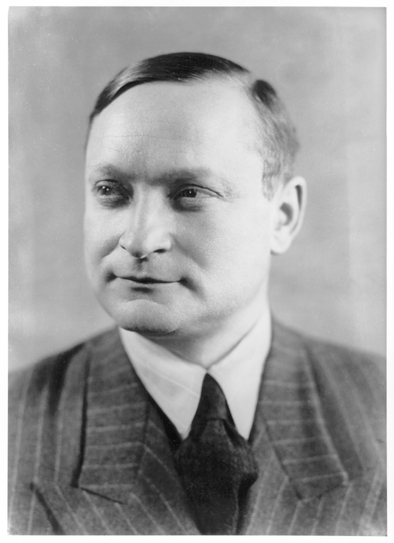 Dr. Georg Leibbrandt (1899 - 1982)
Dr. Georg Leibbrandt (1899 - 1982)
Reich Ministry for the Occupied Eastern Territories
Permanent Secretary (Ministerialdirektor)
From 1941 to 1943, Leibbrandt headed the departments dealing with general politics, the Ukraine, the Occupied Eastern Territories (Ostland), the Caucasus, Russia, and also the press and cultural affairs. In this capacity he was prominently connected with the genocide of the Jews. As early as October 1941, Leibbrandt participated in a meeting with Heydrich where the inclusion of all Jews into the extermination program was discussed. Two days after the Wannsee Conference, he issued invitations for an official meeting to discuss the definition of the term “Jew” in the “Eastern Territories.”
Born in Hoffnungsthal near Odessa. High school in Dorpat and Odessa. Fled to Berlin after the Bolshevist revolution. From 1920, study of theology, philosophy and national economy in Tübingen and Leipzig. Study trips to Paris, London, the Soviet Union and the USA. Ph.D. in 1927. Joined the Nazi Party (NSDAP) in 1933. Head of “Section East” (Ostabteilung) in the Nazi Party’s office for foreign policy. Thereafter, in charge of anti-Communist and anti-Soviet propaganda. In 1938, assessor (Beisitzer) at the People’s Court (Volksgerichtshof). In July 1941, Director of the Main Department No. 1 (Politics) in the Reich Ministry for the Occupied Eastern Territories. In the summer of 1943, he reported for duty in the navy. Was interned in 1945. Released from detention in 1949. A preliminary investigation by the District Court of Nuremberg-Fürth, begun in January 1950, was called off in August 1950. German Commanders linked with Ukrainian Reichskommissariat * SS-Gruppenführer
Walther Schimana * SS-Brigadeführer
Fritz Freitag * SS-Brigadeführer
Sylvester Stadler * SS-Brigadeführer
Nikolaus Heilmann * SS-Hauptsturmführer
Otto Behrendt * SS-Sturmbannführer
Wolf-Dieter Heike * SS-Hauptsturmführer
Herben Schaaf * SS-Hauptsturmführer
Herbert Schaut Walther Schimana
Walther Schimana Fritz Freitag
Fritz Freitag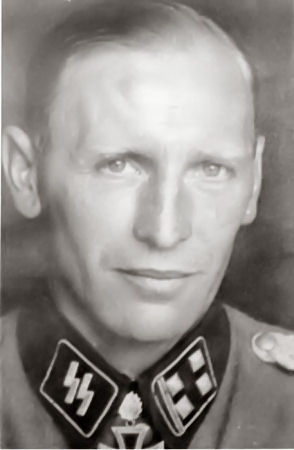 Sylvester Stadler
Sylvester Stadler Nikolaus HeilmannUkrainian volunteers in the German forces
Nikolaus HeilmannUkrainian volunteers in the German forces * Abwehr/Brandemburg special saboteur unit "
Nightingale Regiment"
* 14. Waffen-Grenadier-Division der SS (Ukrainische Nr. 1)
* Freiwilligen-Stamm-Regiment 3 & 4(Russians & Ukrainians)
* Ukrainian National Army
Ukraine propaganda news * Ukrainskyi Dobrovoletz (Der ukrainische Kämpfer) - Ukrainische Freiwilligenverbände
Ukrainian units in the German work organization * Organization Todt OT-Einsatzgruppe Ost (Kiev)
Ukrainian organizations * Organization of Ukrainian Nationalists (OUN)
* Ukrainian Insurgent Army (UPA)
* Ukrainian National Committee
* Free Ukrainian Kossacks Organization
Ukrainian collaborators (heads of local administration and public figures)
* Oleksander Ohloblyn (Kiev mayor, 1941)
* Volodymyr Bahaziy (Kiev mayor, 1941–1942, executed by Germans in 1942)
* Leontii Forostivsky (Kiev mayor, 1942–1943)
* Mykola Velychkivsky (head of the Ukrainian National Committee in Kiev, dismissed in 1942, later emigrated)
* Fedir Bohatyrchuk (head of the Ukrainian Red Cross, 1941–1942)
* Ivan Rohach (journalist, public figure, executed in 1942)
* Oleksii Kramarenko (Kharkiv mayor, 1941–1942, executed by Germans in 1943)
* Oleksander Semenenko (Kharkiv mayor, 1942–1943)
* Paul Kozakevich (Kharkiv mayor, 1943)
* Aleksandr Sevastianov (Vinnytsia mayor, 1941 – ?)
SecurityThe Wehrmacht was pressured for political reasons to gradually restore private properties in zones under military control and accept the local volunteer recruits into their units and the Waffen SS, promoted by local nationalists organizations O.U.M. and U.P.A., whilst receiving political support from the Wehrmacht.
The Reichsführer-SS and chief of German Police,
Heinrich Himmler initially had direct authority over any SS formations in Ukraine to order "
Security Operations", but soon lost it. Especially after the summer of 1942 when he tried to regain control over policing in
Ukraine by gaining authority for the collection of the harvest and failed miserably, in large part because
Koch withheld cooperation. Ironically, in
Ukraine,
Himmler soon became the voice of relative moderation, hoping that an improvement in the Ukrainians living conditions would encourage greater numbers of them to join
the waffen SS's foreign divisions.
Koch properly nicknamed "
hangman of Ukraine" was contemptuous of
Himmler's efforts. In this he was supported by
Hitler who was sceptical when he was not hostile to the idea of recruiting
Slavs in general and
Soviet nationals in particular to the
Wehrmacht.
Economic ExploitationIn the civil administration of the East Affair ministry worked numerous technical staff Slavs under
Georg Leibbrandt, former chief of the east section of overseas political office in the Party, now chief of the political section in the East Ministry, and his deputy
Otto Bräutigam, previously consul with experience in the Soviet Union. Economic affairs remained under the direct management of
Hermann Göring the Plenipotentiary of Four-Years Plan and Oldenburg State Major, and
Fritz Saukel was charged with working with the General Plenipotentiary of Manpower recruitment, though in
Ukraine Koch insisted that
Saukel confine himself to setting requirements leaving the actual "
recruitment" to
Koch and his brutes. The Todt Organization Ost Branch in the land. Other members of the German administration in Ukraine were Generalkommissar
Leyser and Gebietkommissar
Steudel.
The Ministry of Transport had direct control of "
Ostbahns" and "
Generalverkersdirektion Osten" (the railway administration in the Eastern territories). These German central government interventions in the affairs of the East Affairs by ministries were known as Sonderverwaltungen (special administrations).
The position of the Eastern Affairs Ministry was weak because its department chiefs: (Economy, Work, Foods & Crops and Forest & Woods) held similar posts in other government departments (The Four-Year Plan, Eastern Economic Office, Foods and Farming Ministry, etc.) with other supplementary junior staff. Thus the East Ministry was managed by personal criteria and particular interests over official orders. Additionally, they failed to maintain the "
Political Section" at an equal level with more specialized departments (Economy, Works, Farms, etc.) because political considerations clashed with exploitation plans in the territory.
The Reichskommissariat Ukraine paid Occupation taxes and funds to the German Reich until February 1944 the following amounts:
* 1,246,1 M German Reichsmark
* 107,9 M Soviet rubles
In accord with information composed by Schwerin von Krosig the Reich Ministry of Finances.
The Ministry of East Affairs ordered Koch and the Reichskommissar in Ostland in March 1942 to supply 380,000 farm workers and 247,000 industrial workers for German work needs. Later
Koch was mentioned during the new year message of 1943, how he "
recruited" 710,000 workers in
Ukraine. This and subsequent '
worker registration' drives in
Ukraine would eventually backfire after
the Battle of Kursk when the Germans would attempt to build a defensive line along the
Dnieper only to discover that the necessary manpower had been either recruited to forced labour in
Germany or had gone underground to forestall such "
recruitment".
Alfred Rosenberg implemented an "
Agrarian New Order" in
Ukraine, ordering the confiscation of Soviet state properties to establish German state properties. Additionally the replacement of Russian
Kolkhozes and
Sovkhozes, by their own "
Gemeindwirtschaften" (German Communal Farms), the installation of state enterprise "
Landbewirstschaftungsgessellschaft Ukraine M.b.H." for managing the new German state farms and cooperatives, and the foundation of numerous "
Kombines" (Great German exploitation Monopolies) with government or private capital in the territory, to exploit the resources and Donbass area.
Hitler said "
Ukraine and the East lands would produce 7 Million, or more likely 10 or 12 Million of Metric tonnes of Grain to provide Germany's food needs".
PopulationThe official German press, in 1941, reported the Ukrainian urban and rural populations as 19 millions each. The civil authorities in the Reichskommissariaten reported their combined population as 16,910,008 people. The 1926 Soviet official census recorded the urban population as 5,373,553 and the rural population as 23,669,381 - a total of 29,042,934. In 1939 a new census reported the Ukrainian urban population as 11,195,620 and rural population as 19,764,601; a total of 30,960,221. The Ukrainian Soviets counted 17% of total Soviet population.
German and Dutch settlementThe regime was planning to encourage settlement of
German and
Dutch farmers in the region after the war, along with the empowerment of some ethnic Germans in the territory. Another alleged objective was the creation of a "
Ukrainian Independent State" supportive of
the German Cause. This land and
the Caucasus were the supposed
residence of ancient German Gothic tribes. The sending of
Dutch settlers was charged to the "
Nederlandsche Oost-Compagnie",
NOC, a Dutch-German Company dedicated to encourage the colonization of the east by Dutch citizens.
The German civil administration met "
Volksdeutsche" (ethnic Germans) in
Mykolaiv,
Zaporizhia and
Dnipropetrovsk. The archives of the Soviet census in 1926 counted them as 393,924 persons. The Soviets counted ethnic Germans in all Russia at 1,423,534, or 1% of the total population in 1939.
The administration took measures to protect Germans in the area who were entered on their Volksdeutsch racial list. They received special rights
* the return of their land and property prior to the Soviet Revolution
* permission to return to visit parents in the motherland
* the creation of special German resident zones in Dnipropetrovsk and other areas
* encouraged recruitment to the German Army or service in the civil administration in the territory, amongst other special measures.
In Ukraine the Germans published a "
local" journal in the German language, the
Deutsche Ukrainezeitung.
During the occupation a very small number of cities and their accompanying districts maintained
German names. These cities were designated as urban strongholds for
Volksdeutsche natives.
Hegewald (
Himmler's field headquarters and the location of
a small, experimental German colony),
Halbstadt (
a German Mennonite settlement),
Alexanderstadt, and
Kronau were some of these.















